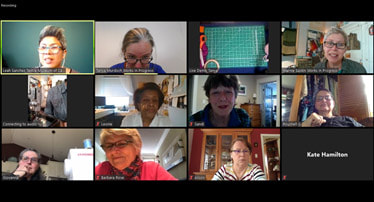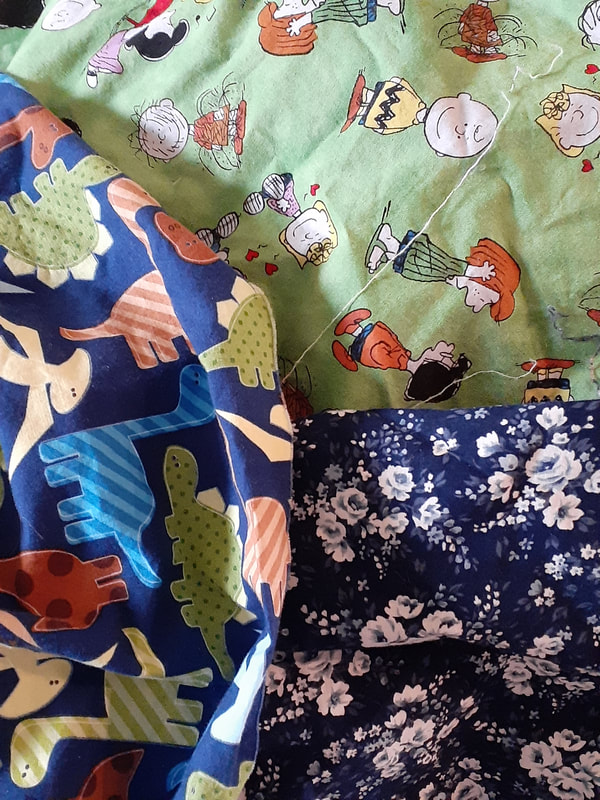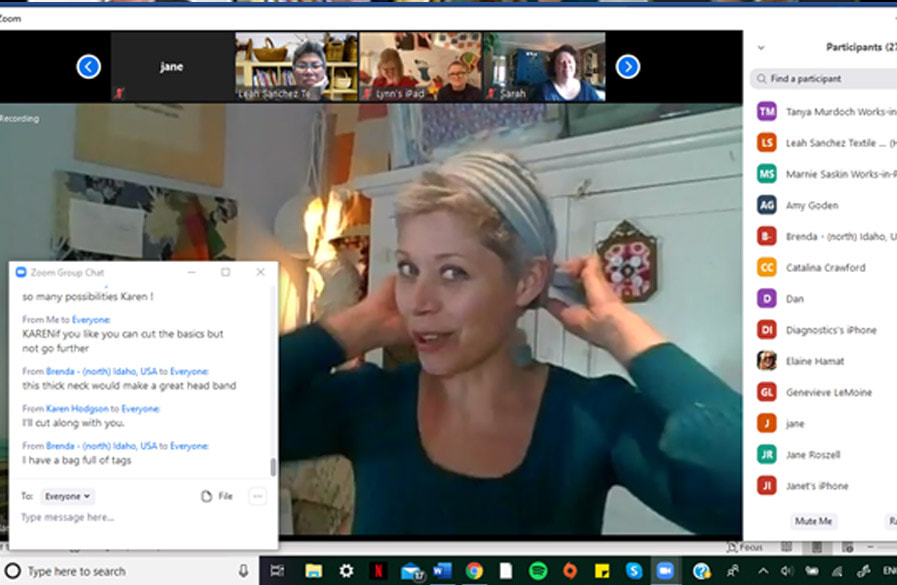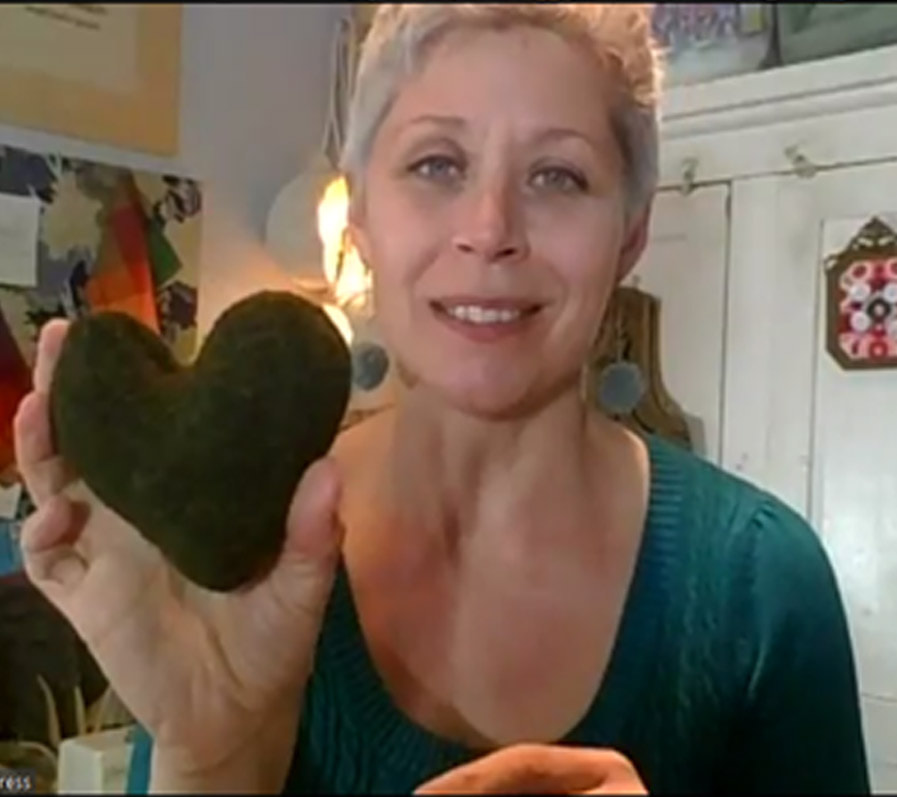|
What a pleasure to hang out with the lovely Building Roots team again.
When the stay home protocol began in reaction to COVID 19, we had done quite a few of the Do it Together workshops hosted by Kate Hamilton from Building Roots, Building Roots facilitators and friends got together last Thursday for a trial online version of the Do it Together workshops usually hosted in the Moss Park Market space. The workshop featured: poetry, birdsong, garden tips, birdfeeder crafting, music appreciation, guided meditation and discussion about community PLUS this walkthrough on making a beeswax wrap (video above featuring Works-in-Progress artists Tanya Murdoch) I followed another tutorial online to do this the first time, you can find that link on our useful info page. Here are some notes: Some things to remember: beeswax wraps are a reusable alternative to cling wrap, the original wax paper, and they can be made from repurposed old shirts, sheets... just wash them first and cut them up into squares, circles... a shirt may inspire you as sleeves or pockets can work as little snack or lunch bags with little sewing. -Beeswax is anti-microbial, so the wraps will keep naturally food fresh and resist mold -they can be wrapped directly around cheese or vegetables or sandwiches, but should not replace butcher paper for meat -you can use as a cover. if they do not stick enough just tie with elastic or string. -additions of oil or rosin can make them more malleable and more sticky, more like cling wrap. -you can wash them with soap and cold water at the sink. Don't wash in hot water or the wax will melt. To make simple wraps you need: beeswax sacrificial grater upcycled cotton or linen cloth (manmade fabrics may melt) an iron cookie sheet can also add rosin or oil to change qualities. Works-in-Progress artists and community started getting into mask making, experimenting with and researching the science and art behind mask making, and on April 15th we co-hosted our second online tutorial with the Textile Museum of Canada. Check it out! This one was by invite only, so we invited museum volunteers and Kate Hamilton from Building Roots. It was a very friendly and inquisitive group and so cool to be an official part of the TExtile Museum community. The video above is some hands on demonstrations of the simple no sew or simple sewn masks recommended by the Center for Disease Control and Prevention (the CDC) In a separate video we look through some of the many clever mask-making tutorials online these days, some personal show and tell mask making shared experiences and then a hands on step by step walk through of a favourite pattern used by WIP artist Marnie Saskin. You can see that video here: Adaptations to patterns for personal use masks: a discussion/demo There is a lot of interest in making and wearing masks these days, especially since the CDC and Canada Public Heath changed their recommendation about wearing masks for personal use (they are for it, with some qualifiers) We were also inspired by Facebook group the Sewing Army (organized by Diana Coatsworth) who have established an amazing all volunteer army of makers, drivers, donors and organizers to make thousands of masks and get them where they are needed. It's amazing. We were able to divert some of our stash and just act as conduit for others to the cause, and have made a few masks for our local community following their lead. There was a lot of side info collected by Leah Sanchez from the Textile Museum, I include some links below. Here is her explanation for the event and some links below. the rest of the tutorials can be linked to on our useful info page: Why are we doing this? We would like to provide our audience with the tools and resources they need to make their own protective masks. We are not advocating for one particular way of making masks, but we want to encourage people to educate themselves and try out what will work for their personal circumstances. We are promoting a maker mentality, focusing on using materials that are readily available in our homes and taking into account different skill levels and abilities. extra links: www.acraftyfox.net www.cdc.gov/coronavirus Michael Garron 1000 mask challenge World Health Organization Advice on the use of masks in the context of Covid-19 An in-depth article from Wired about the pros/cons of wearing masks: https://www.wired.com/story/its-time-to-face-facts-america-masks-work/ Two articles discussing a study from the UK on most effective materials: https://www.designworldonline.com/cdc-weighs-diy-facemasks-for-the-general-public-heres-the-science-behind-mask-materials/ https://smartairfilters.com/en/blog/best-materials-make-diy-face-mask-virus/ 4. How to put on and take off your mask https://www.sfcdcp.org/communicable-disease/healthy-habits/how-to-put-on-and-remove-a-face-mask/ 5. Surgical cap patterns https://twelvebees.blogspot.com/2020/04/how-to-sew-surgical-cap-pattern-diy.html http://thesewingarmy.com/files/scrub-cap.pdf On April 15th we co-hosted our second online tutorial with the Textile Museum of Canada. This one was by invite only, where the museum invited museum volunteers and Kate Hamilton from Building Roots. It was a very friendly and inquisitive group, we will be posting videos here along with a full report in collaboration with our hosts later this week.
Experiments with natural dyes- onion skins and eggshells plus some frozen blueberries... inspired by Textile Museum of Canada featured artist Maria Tapal @zmarie93. You can see her tutorial in their Instagram "show and tell" story. This was an experiment based on what was around. The onion skins had been aspirational in jars for "sometime". For blue, best I could find in house was some frozen blueberries- more subtle than I would have thought considering how they stain everything else. I followed the same method as Marie outlined in her natural dying fabric tutorial: simmer the onion skins in a pot for about 20-30 minutes. I used red and yellow onion skins but there was not much difference. Yellow onion skins made a more vibrant orange, red more of a brown... she cautions against too much heat as it dulls the colour. Also, the dye works better when it's warm. Marie strained the skins out for a more even dye bath but they make bonus random textures on the eggshells. So, these were all made with commodity white eggs and basically two colours, and then various mark making: melted candle for a resist, tied on various green things from outside and the fridge with elastics, string, net from lemons. Very satisfying! Poured the leftover dye back in jars and knotted up some bits of old fabric to see how they look- still soaking.
Learning things.
This past week we did our first ever online workshop as guest facilitators with the Textile Museum of Canada. We had three runthroughs in advance of the event, because we agreed to open it up beyond our comfort level, but had great support from all involved. It was great! and full- 42 people on the waitlist so we will likely do it again. We are currently between grants so this is all volunteer for Works-in-Progress, but the benefits for our group are worth it. First, we are applying for grants to develop online materials and skills (because zeitgeist) so the experience is great. Plus, it is a great way to give back and fill a need in the maker community (because karma) And it was so much fun to meet the participants- people from Ohio, Yukon, Maine, North Dakota, London Ontario. The facilitators were in basements and kitchens and home studios in Toronto and Hamilton. And we are able to meet people beyond the teach in because of the huge maker community connected with the Textile Museum of Canada- many more people have been checking out our webpage, connecting on instagram and subscribing to the newsletter- welcome! And finally, more benefits: in my other hat I am a video editor/producer at Cityline and have a production company called HomemadeTV where I make videos with small groups and organizations celebrating community and telling stories. So I took the recorded workshop and made some shorter online resources like the one above. This video is all about up-cycled wool sweaters as a inspirational material for artists and artisans, and properties of wool that make it so attractive to work with. Marnie Saskin is a WIP artist but also has a home studio where she makes beautiful up-cycled goods (there's a few pix below.) She is an artist/scientist and knows a lot about wool through research and experimentation and experience and shares some of that knowledge in the video above. Check out the video or her website for more inspiration! We have had people reaching out with donations to the Works-in-Progress project so thank you! I have also started sharing supplies with people who are making masks or need things to do during this time. And personally, I have really enjoyed the care packages from friends and families. Everything has to sit outside or be wiped down which runs counter to my natural inclination, but learning patience as well. Storage is, as always, a problem so if anyone wants to make use of some of these donations, please let us know [email protected]. Here are some things that have arrived by mail or porch delivery or gloved hand-off. Thanks you all for donating and making and for your kindness and generousity. A lot of firsts! First of April (April Fool's Day) we were guest facilitators (strange days) for the first time with Textile Museum of Canada and it was the first time any of us had hosted an online workshop. So, we did a little prep...
Marnie and I got together last week to run it through with Leah, wearing her Textile Museum of Canada hat, although she is also part of Works-in-Progress, We decided we needed a proper tech run through with us in our roles, and brought in the communications person from the Textile Museum, Zile. The museum then ponied up for the pro software so we could have an hour and half meeting with multiple people. We capped it at 30 (it was a negotiation, Marnie and I thought it would be too many, but in the end about a third were active onscreen, the rest were logged on listening and communicating by chat. People were participating from Yukon, Maine, North Dakota, Toronto, London (Ontario :)) Amazing!! Leah sent out info to all the registrars in advance and shared docs during and after the workshop. Marnie set up a second camera for her hands, Leah did the switching between screens and switched audio on and off, and managed participants and I mostly monitored the chat and provided conversation and questions. Leah controlled the spotlight and could mute people (necessary in such a large group) but everyone could speak up when they wanted, either by unmuting or chatting. I would read comments/questions to Marnie. Marnie had physical examples to share on both cameras, and plenty of knowledge to share about materials, sewing and invited participants to share their own stories and show what they were making. I think we will do this again. Certainly a lovely bit of connection in these strange isolated times. |
about us
art experiments turning waste into beauty Archives
February 2024
Categories
All
|


























 RSS Feed
RSS Feed
